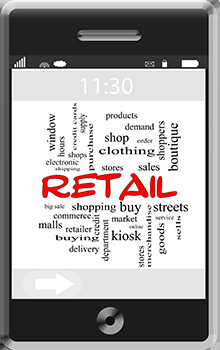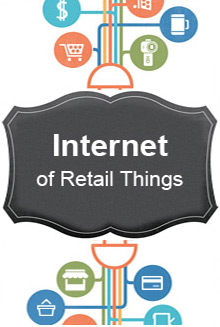Internet of things has not just been a buzz word in the last year, but has shown actual business ROI. With IoT leading the game in Industry 4.0, the technology has already proved its worth. Looking at the successful implementation of IoT in chosen sectors of manufacturing, telecom, energy, etc., even mainstream industries are looking at IoT as the accelerator to drive business objective and digital transformation. Business Insider predicts business spending on IoT solutions will hit $6 trillion by 2021. And the fact triggers more investments from into the promise of IoT—accentuating its potential to enhance the customer experience in practically every industry.
2018 won’t be a silver bullet year for IoT, but, nonetheless, IoT will witness a massive adoption and will lead to digital transformation and disruption unseen before.
- Business Transformation Powered by IoT: IoT will act as a shot in the arm for business transformation, creating a connected business framework, with connected logistics, connected workforce, and connected consumers. IoT will power both B2B and B2C business models, by connecting the ecosystem, generating valuable data and deriving insights and strategies based on real-time data. Another catalyst for business transformation is Digital Transformation. 74% of corporations believe that digital transformation is impossible without IoT, as per the recent Vodafone’s 2017/18 IoT Barometer. IoT platforms, hardware and solutions help in creating a smart ecosystem and enabling digital disruption.
- Smart Home & Smart City Projects become a reality: With the Increased adoption of IoT, smart home, and smart cities project will become mainstream and largely adopted across the globe. IoT will help in creating a superior infrastructure and will enable better control, monitoring and optimized utilization of the resources at individual, organization and community level. With IoT initiative at large scale, smart street lighting network, smart grids, fog computing will become a reality and will help in saving energy, fuel, and other natural resources.
- LPWAN technologies will open up the IoT market: Low-power wide area networks (LPWAN) technologies, like Narrowband IoT, allow for amplified network coverage over a wide area at a comparatively lower cost, making them the perfect technology for enabling connectivity in remote areas. LPWAN technologies will open the IoT market to applications that have not previously benefitted from connectivity. Non-cellular LPWAN technologies such as LoRa and Sigfox will also gain momentum with many smart city projects and other applications where a cost-effective, low-bandwidth and extended battery life technology is needed.
- Edge Computing: While companies are beginning to move toward cloud computing, edge computing, driven by the absolute volume and speed of data generated by the IoT, is taking the driver’s seat in the ecosystem. Industry front-runners such as Cisco and HPE have committed huge investments in terms of hardware, software, and service. As smart drones, self-driving vehicles, and other AI-powered smart devices grow and need to connect and communicate in real time through the IoT sensors, the effort of transmitting data to the cloud becomes exceedingly impractical. Edge computing becomes most viable as most of these devices will need real-time response and processing.
- Digital Twin: IoT and digital twin will grow in parallel. The current acceleration in the adoption and growth of digital twin is powered by IoT and lowering cost of technologies. The IoT sensors and devices are the enablers to feed data to the framework and models to the create a replica of the real twin, the digital twin.
- Advanced Analytics and Machine learning to aid IoT growth: With a massive network of sensors, IoT will generate enormous amount of data every second. This data has the power to optimize business processes, create a better customer experience, optimize cost and deliver business profitability. The challenge though is to manage the data generated and derive real-time business insights. This is where advanced analytics and machine learning algorithm play a critical role and enable automation and self-learning in transforming data to insights. Tech leaders like IBM, Microsoft SAS, and SAP are all investing enormously in IoT Analytics to leverage the powerful recipe of Analytics and IoT for driving new business insights across industries, processes and applications.
- Security, Compliance and Privacy challenges of IoT: With the increased deployment of IoT technologies, concerns around Security, Compliance, and Privacy will become critical. With expansion in the IoT ecosystem and increased fragmentation, the network will grow more complex and will lead to challenges around the compliance requirement, security, and privacy of data.
- The adoption of as-a-service IoT solutions: With the growth in the IoT market, the as-a-service business models and solution will also see an upward trend. For instance, by 2021, overall market revenues for IoT managed security-as-a-services are set to exceed $11 Billion.
While the industry is positively adopting IoT, there are multiple angles to IoT that are yet to be explored and expedited. 2018 will witness the expansion of IoT and penetration in more personal space versus the current business and industry use cases.

Sr. Manager, Marketing, Digital Services at Happiest Minds. With 10+ years of experience in marketing, she likes to seek challenging position that needs innovation, creativity and dedication. Her areas of expertise lie in Digital Marketing, Marketing Communication and strategy, Content Marketing, Sales Enablement, Lead Generation and Vendor Management. In her free time, Pragya likes to paint, write and travel.






